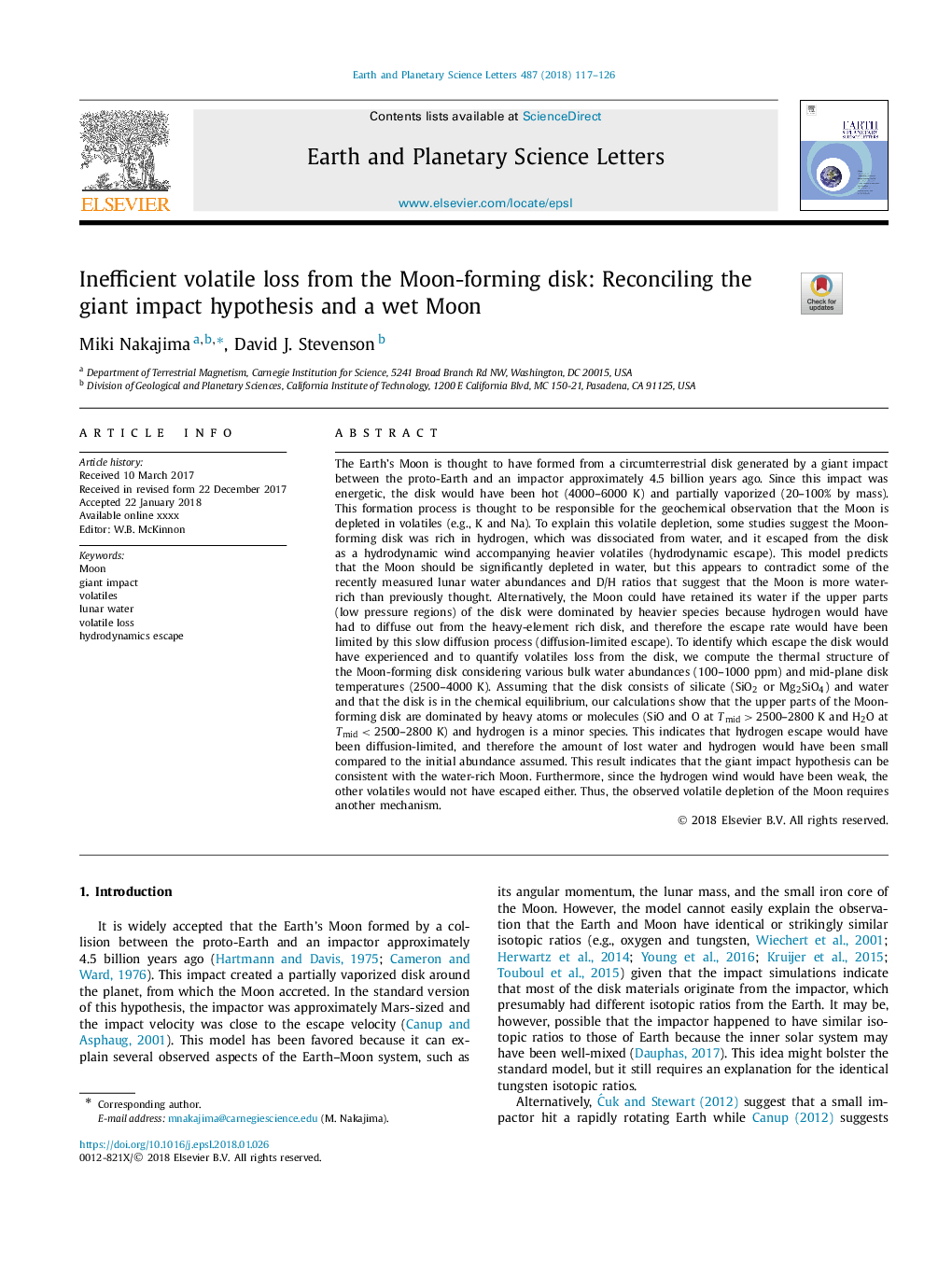| کد مقاله | کد نشریه | سال انتشار | مقاله انگلیسی | نسخه تمام متن |
|---|---|---|---|---|
| 8907078 | 1634669 | 2018 | 10 صفحه PDF | دانلود رایگان |
عنوان انگلیسی مقاله ISI
Inefficient volatile loss from the Moon-forming disk: Reconciling the giant impact hypothesis and a wet Moon
ترجمه فارسی عنوان
از دست دادن فرآیند ناپایدار ناشی از دیسک ماه سازنده: تصویب فرضیه تاثیر غول و ماه مرطوب
دانلود مقاله + سفارش ترجمه
دانلود مقاله ISI انگلیسی
رایگان برای ایرانیان
کلمات کلیدی
ماه، تاثیر عظیم، فرار، آب قمری از دست دادن فرار، فرار هیدرودینامیک،
موضوعات مرتبط
مهندسی و علوم پایه
علوم زمین و سیارات
علوم زمین و سیاره ای (عمومی)
چکیده انگلیسی
The Earth's Moon is thought to have formed from a circumterrestrial disk generated by a giant impact between the proto-Earth and an impactor approximately 4.5 billion years ago. Since this impact was energetic, the disk would have been hot (4000-6000 K) and partially vaporized (20-100% by mass). This formation process is thought to be responsible for the geochemical observation that the Moon is depleted in volatiles (e.g., K and Na). To explain this volatile depletion, some studies suggest the Moon-forming disk was rich in hydrogen, which was dissociated from water, and it escaped from the disk as a hydrodynamic wind accompanying heavier volatiles (hydrodynamic escape). This model predicts that the Moon should be significantly depleted in water, but this appears to contradict some of the recently measured lunar water abundances and D/H ratios that suggest that the Moon is more water-rich than previously thought. Alternatively, the Moon could have retained its water if the upper parts (low pressure regions) of the disk were dominated by heavier species because hydrogen would have had to diffuse out from the heavy-element rich disk, and therefore the escape rate would have been limited by this slow diffusion process (diffusion-limited escape). To identify which escape the disk would have experienced and to quantify volatiles loss from the disk, we compute the thermal structure of the Moon-forming disk considering various bulk water abundances (100-1000 ppm) and mid-plane disk temperatures (2500-4000 K). Assuming that the disk consists of silicate (SiO2 or Mg2SiO4) and water and that the disk is in the chemical equilibrium, our calculations show that the upper parts of the Moon-forming disk are dominated by heavy atoms or molecules (SiO and O at Tmid>2500-2800 K and H2O at Tmid<2500-2800 K) and hydrogen is a minor species. This indicates that hydrogen escape would have been diffusion-limited, and therefore the amount of lost water and hydrogen would have been small compared to the initial abundance assumed. This result indicates that the giant impact hypothesis can be consistent with the water-rich Moon. Furthermore, since the hydrogen wind would have been weak, the other volatiles would not have escaped either. Thus, the observed volatile depletion of the Moon requires another mechanism.
ناشر
Database: Elsevier - ScienceDirect (ساینس دایرکت)
Journal: Earth and Planetary Science Letters - Volume 487, 1 April 2018, Pages 117-126
Journal: Earth and Planetary Science Letters - Volume 487, 1 April 2018, Pages 117-126
نویسندگان
Miki Nakajima, David J. Stevenson,
